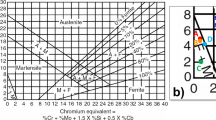Abstract
Welding is widely used for joining steel components in the automobile industry. With the use of high-quality materials, welding defects began to become increasingly complex. Immobilized oxide is one of the recent complex defects. Immobilized oxide defects generated in gas metal arc welding (GMAW) of high-strength steel and high-strength galvanized steel result in unpainted part on the surface of welding beads. Thus, it is necessary to be eliminated by using grinding and peening. However, it is difficult to find where oxides generate and how oxides generate in order to eliminate it. Few studies have explored the mechanism of immobilized oxide formation in other fields so far. In this study, the generation patterns of oxide defects were confirmed. Further, an oxide defect monitoring system for GMAW was developed by using an infrared camera and image processing equipment. The chemical properties of the immobilized oxide were verified by performing energy dispersive spectroscopy (EDS). The oxide appeared to be brighter in the infrared image, and then, image processing was conducted to determine the boundary of oxide defects. The processed images were laid over the original images, and the oxide defect area was displayed on the monitoring panel. Patterns of oxide defect generation were confirmed when it was combined with the following molten pool area moving in the opposite direction of the welding direction in our results. The developed monitoring system can be easily applied to the automatic welding process in the automobile industry.








Similar content being viewed by others
References
Lifang M, Genyu C, Xiangzhong J, Yi Z, Qiang W (2008) Research on laser welding of high-strength galvanized automobile steel sheets. Opt Laser Eng 105:1117–1124. https://doi.org/10.1016/j.optlaseng.2009.06.016
Akhter R, Steen WM (1991) Welding zinc-coated steel with a laser and the properties of the weldment. J Laser Appl 3:9–20. https://doi.org/10.2351/1.4745277
Kim CH, Choi WY, Kim JH, Rhee SH (2008) Relationship between the weldability and the process parameters for laser-TIG hybrid welding of galvanized steel sheets. Mater Trans 49:179–186. https://doi.org/10.2320/matertrans.MER2007159
Lee CJ, Kim JD, Kim YC (2015) Study on monitoring of plasma emission signal in lap welding of Zn coated steel sheet using CO2 laser. Int J Precis Eng Man 16:495–500. https://doi.org/10.1007/s12541-015-0067-4
Simpson SW (2007) Statistics of signature images for arc welding fault detection. Sci Technol Weld Joi 12:556–563. https://doi.org/10.1179/174329307X227256
Zhao CX, van Steijn V, Richardson IM, Kleijn CR, Kenjeres S, Saldi Z (2009) Unsteady interfacial phenomena during inward weld pool flow with an active surface oxide. Sci Technol Weld Joi 14:132–140. https://doi.org/10.1179/136217108X370281
Lille C, Jargelius-Pettersson RFA (2000) Factors affecting the oxidation mode of stainless steels. Mater High Temp 17:287–292. https://doi.org/10.1179/mht.2000.17.2.016
Westin EM, Olsson CO, Hertzman S (2008) Weld oxide formation on lean duplex stainless steel. Corros Sci 50:2620–2634. https://doi.org/10.1016/j.corsci.2008.06.024
Xu YL, Dong ZB, Wei YH, Yang CL (2007) Marangoni convection and weld shape variation in A-TIG welding process. Theor Appl Fract Mec 48:178–186. https://doi.org/10.1016/j.tafmec.2007.05.004
Bae KY, Lee TH, Ahn KC (2002) An optical sensing system for seam tracking and weld pool control in gas metal arc welding of steel pipe. J Mater Process Tech 120:458–465. https://doi.org/10.1016/S0924-0136(01)01216-X
Kovacecic R, Zhang YM (1997) Real-time image processing for monitoring of free weld pool surface. J Manuf Sci Eng 119:161–169. https://doi.org/10.1115/1.2831091
Zhang HT, Feng JC, He P (2008) Interfacial phenomena of cold metal transfer (CMT) welding of zinc coated steel and wrought aluminum. Mater Sci Tech 24:1346–1349. https://doi.org/10.1179/174328407X213152
Funding
This research was supported by the Agency for Defense Development (2016.12~2018.11).
Author information
Authors and Affiliations
Corresponding author
Additional information
Publisher’s note
Springer Nature remains neutral with regard to jurisdictional claims in published maps and institutional affiliations.
Electronic supplementary material
ESM 1
(DOCX 837 kb)
Rights and permissions
About this article
Cite this article
Jeong, Y.C., Lee, S.J., Park, T.W. et al. Real-time monitoring of immobilized oxide defects on bead surface in welding of high-strength galvanized steel. Int J Adv Manuf Technol 107, 2409–2416 (2020). https://doi.org/10.1007/s00170-020-05070-x
Received:
Accepted:
Published:
Issue Date:
DOI: https://doi.org/10.1007/s00170-020-05070-x



